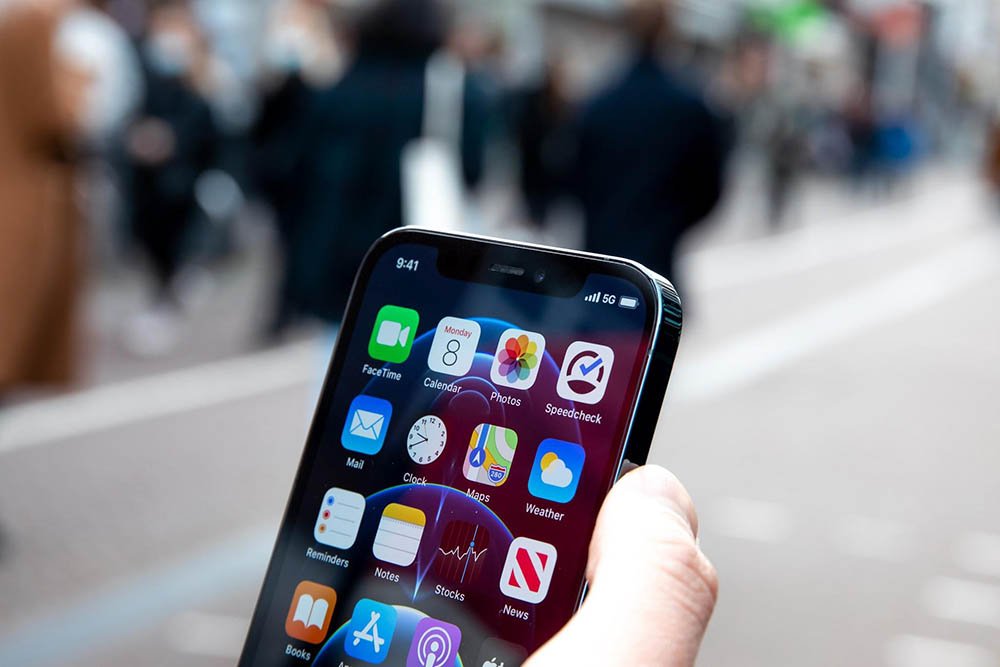As the world transitions from 4G to 5G, the implications for cybersecurity are profound. With promises of ultra-fast speeds and a hyperconnected universe, 5G also presents a plethora of network security problems. Ensuring a smooth transition demands understanding the risks and challenges associated with this new security technology.
Table of Contents
The Rise of 5G Technology
5G, the fifth generation of mobile network technology, is poised to revolutionize our digital ecosystem. With the potential to be 100 times faster than 4G, it’s no surprise that leading 5G technology companies, including Huawei, Qualcomm, and Ericsson, are racing to dominate this space. The potential for digital commerce enabled by 5G mobile is enormous, laying the groundwork for a more interconnected world.
Managing Risk
As with any revolutionary technology, 5G brings with it inherent risks. The exponential increase in connected devices and the vast 5G infrastructure present numerous challenges. With the allure of enhanced capabilities, we also see an increase in potential problems in cybersecurity. Attack vectors, previously deemed low-risk, could be exploited in unforeseen ways, necessitating the need for 5G security companies to step in.
Why does 5G require new approaches to cybersecurity?
5G, heralded as the next frontier in mobile communication, brings not just increased speed and connectivity but also a transformative shift in the way networks operate. However, these advances necessitate a rethinking of traditional cybersecurity strategies. Here’s why 5G requires new approaches to cybersecurity:
- Complex Network Infrastructure: Unlike its predecessors, 5G introduces a more intricate and decentralized network infrastructure. The deployment of a massive number of small cells, integration of software-defined networking (SDN), and network function virtualization (NFV) make the 5G environment more complex. This complexity provides multiple potential entry points for attackers, making traditional perimeter-based security measures less effective.
- Expanded Attack Surface: 5G is designed to cater to a broader range of devices, especially with the Internet of Things (IoT) in mind. As billions of new devices get connected, from smart home gadgets to critical infrastructure sensors, the attack surface expands exponentially. Each device can potentially become a vulnerability point, demanding more robust and diversified security measures.
- Enhanced Functionality: The advanced features of 5G, such as ultra-reliable low latency communications (URLLC) and massive machine-type communications (mMTC), support critical applications like autonomous vehicles and large-scale IoT deployments. A breach in these systems could have dire consequences, emphasizing the need for advanced security solutions tailored to these functionalities.
- Software-Centric Approach: 5G networks lean more towards software than hardware, making them more agile and flexible. While this offers benefits in scalability and adaptability, it also introduces vulnerabilities typically associated with software systems. These can include bugs, software misconfigurations, and other exploitable weaknesses.
- Dynamic Network Slicing: One of the innovations in 5G is the ability to create ‘slices’ of the network tailored to specific use cases or clients. While network slicing optimizes performance, it also complicates security as each slice might require its security protocol depending on its use case.
- Geopolitical Concerns: The global race to 5G dominance has brought with it concerns about the supply chain and potential backdoors in equipment, especially with primary infrastructure components coming from a few major players. This requires a renewed focus on supply chain security.
- Increased Data Flow: With enhanced speed and capacity, 5G networks will handle data volumes much larger than previous generations. This increased data flow makes it essential to have advanced security protocols to monitor, manage, and protect this data from breaches and misuse.
In light of these challenges, traditional cybersecurity measures are not enough. Adapting to the 5G era requires a proactive, multi-layered security strategy, leveraging AI and machine learning for real-time threat detection, ensuring end-to-end encryption, and regularly updating security protocols in tandem with the evolving threat landscape.
The Role of Penetration Testing in 5G
5G represents the latest advancement in mobile network technology and holds the promise of revolutionizing the way we communicate, work, and interact with technology. While this significant enhancement in speed and connectivity offers numerous benefits, it also opens the door to potential vulnerabilities and security threats. Penetration testing, a crucial component of the cybersecurity toolbox, takes center stage in ensuring the security of this emerging network.
One of the primary concerns surrounding 5G is its reliance on a new infrastructure that is quite different from previous generations. This novel structure, despite being laden with advanced features, is susceptible to previously unseen vulnerabilities. It is through regular penetration testing that such vulnerabilities can be identified and addressed before they’re exploited by malicious entities.
The expanse of the 5G ecosystem is vast, spanning from IoT devices to crucial infrastructure components. Delving deep into these, application penetration testing services (check this site) play a critical role in bolstering the security defenses of the wider 5G network.
Further complicating the security landscape are the advanced features of 5G, such as the Enhanced Mobile Broadband (eMBB), which provides high-speed data transfer and multimedia capabilities, and is a lucrative target for cyber adversaries. The Ultra-Reliable Low Latency Communications (URLLC) feature of 5G, which is essential for functions like autonomous driving, must be safeguarded at all costs, as any compromise could result in severe consequences. The growing IoT environment, supported by 5G’s Massive Machine-Type Communications (mMTC), broadens the attack surface, emphasizing the importance of services like web application penetration testing.
5G, being a dynamic and ever-evolving technology, will face new threats as it continues to grow and mature. Trustworthy penetration testing companies will be at the forefront, adapting their services to counter these evolving threats and offering the latest defenses. Moreover, as 5G becomes more prevalent, there will be an influx of new regulatory and compliance standards dictating its security. Regular penetration tests will be instrumental in ensuring compliance with these standards.
In conclusion, as we stand on the cusp of the 5G revolution, the role of penetration testing has become increasingly critical. Serving as a protective barrier, it guarantees that the myriad advantages of 5G aren’t offset by security lapses. Through the collaborative efforts of 5G innovators and cybersecurity professionals, the future of connectivity promises to be not just faster, but also more secure.

When Will 5G Be Available?
5G, the fifth generation of mobile network technology, represents a significant leap from its predecessor, 4G. Its promise of faster speeds. The potential of faster speeds, reduced lag, and better spectrum efficiency has sparked global excitement regarding 5G. However, a common question lingers: When will 5G be universally accessible? Currently, 5G’s implementation is staggered and differs across regions. Advanced countries have already commenced 5G rollouts in their major cities, including locations in the United States, Europe, South Korea, Japan, China, and Australia. These places are experiencing the emergence of 5G either through restricted services or more expansive coverage. Prominent telecom giants like Verizon, AT&T, China Mobile, and SK Telecom are steadily broadening their 5G offerings. As they establish the essential infrastructure, the reach of this network to the general public increases. It’s important to acknowledge that while cities and urban locales are at the forefront of 5G adoption, rural regions may experience a delay due to infrastructural development challenges specific to those areas. Additionally, to experience the full benefits of 5G, users require devices that support it. On this front, mobile producers have swiftly adapted. Major brands such as Samsung, Apple, and Huawei have already unveiled 5G-ready smartphones. With the expansion of the 5G network, it’s anticipated that a wider variety of compatible gadgets will flood the market at diverse price ranges.
Predicting an exact timeline for the universal availability of 5G is challenging due to several factors:
- Regulatory hurdles in certain regions.
- Infrastructure costs.
- The pace of technological advancements.
- Geographical and topographical challenges in certain areas.
Nevertheless, specialists in the field anticipate that by the mid-2020s, a sizable segment of the world’s populace will be connected to 5G networks. It’s crucial for both consumers and enterprises to remain informed about 5G deployment strategies from their regional service providers in their specific locations.
Strategies for Enhancing 5G Security
Protecting the 5G ecosystem requires a multi-faceted approach. Key strategies include:
- Embracing 5G security features embedded within the technology itself.
- Engaging with 5G security companies specializing in the unique challenges posed by this new network.
- Regularly updating and patching systems to address vulnerabilities.
- Educating users and businesses about best practices in 5G cybersecurity.
5G stands on the cusp of redefining our digital age. While its potential is vast, ensuring a secure environment is paramount. By understanding the challenges, staying informed about the evolving threat landscape, and proactively addressing vulnerabilities through measures like penetration testing services, we can harness the full power of 5G while minimizing risks.





